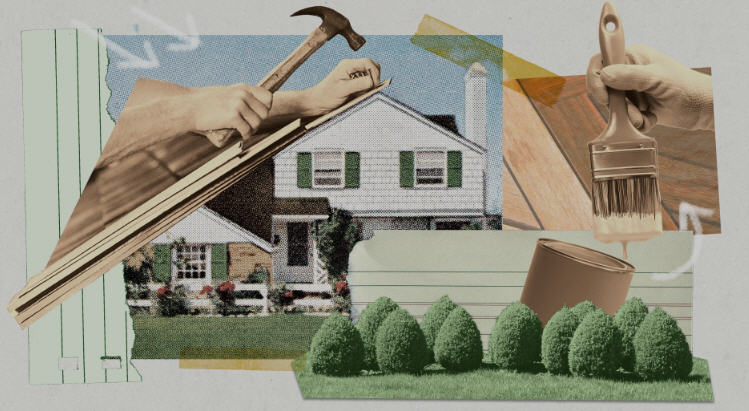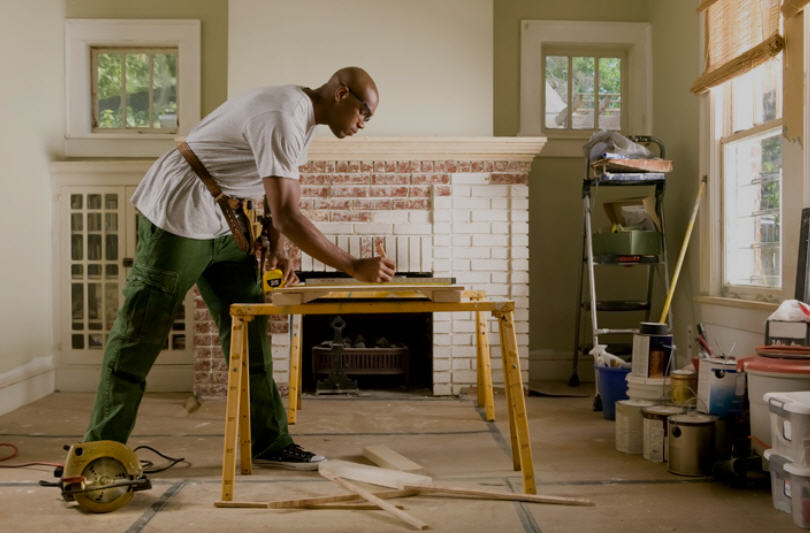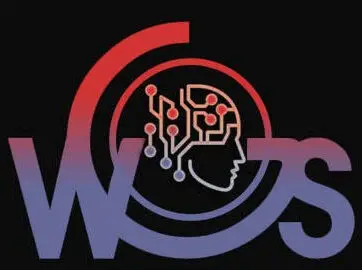A chatbot for the home improvement industry (e.g., contractors, interior designers, or home improvement retailers) can address several business problems, improve customer satisfaction, and streamline operations. Here are the key problems it can solve:
1. 24/7 Customer Support – Basic / Intermediate
- Problem: Customers often have questions outside of business hours, such as project timelines, pricing, or product availability.
- Solution: A chatbot can provide instant answers to common queries, ensuring customers get the information they need anytime.
2. Project Consultation and Scheduling – Basic / Intermediate
- Problem: Coordinating consultations, site visits, or project start dates can be inefficient.
- Solution: A chatbot can integrate with calendars to schedule appointments, send reminders, and reschedule if needed.
3. Product Recommendations – Basic / Intermediate
- Problem: Customers may struggle to choose the right materials, tools, or designs for their home improvement projects.
- Solution: A chatbot can ask a few questions and provide personalized recommendations based on project type, budget, or style preferences.
4. Pricing and Quotation Requests – Basic / Intermediate
- Problem: Customers frequently ask for cost estimates or quotes for home improvement projects.
- Solution: A chatbot can provide ballpark estimates based on project details and material preferences.
5. Lead Generation and Qualification – Basic / Intermediate
- Problem: Home improvement businesses may struggle to capture and qualify leads for new projects or services.
- Solution: A chatbot can engage website visitors, collect their information, and pre-qualify leads based on their needs.
6. Feedback and Surveys – Basic / Intermediate
- Problem: Collecting feedback from customers can be inconsistent and time-consuming.
- Solution: A chatbot can automate feedback collection and surveys, providing valuable insights for improvement.
7. Multilingual Support – Basic / Intermediate
- Problem: Home improvement businesses serving diverse populations may face language barriers.
- Solution: A chatbot can offer multilingual support, enabling communication in the customer’s preferred language.
8. Reducing Administrative Overhead – Basic / Intermediate
- Problem: Administrative tasks (e.g., answering FAQs, scheduling, reminders) consume significant time.
- Solution: A chatbot can automate routine tasks, reducing the workload on staff.
9. Improving Customer Retention – Basic / Intermediate
- Problem: Customers may feel neglected if communication is slow or inconsistent.
- Solution: A chatbot can maintain consistent engagement, provide timely updates, and collect feedback.
10. Competitive Advantage – Basic / Intermediate
- Problem: Home improvement businesses face increasing competition and need to differentiate themselves.
- Solution: A chatbot can position the business as tech-savvy and customer-focused, attracting more clients.
11. Data Analytics and Insights – Basic / Intermediate
- Problem: Businesses may lack actionable insights into customer behavior and preferences.
- Solution: A chatbot can collect and analyze data on customer interactions, helping improve services and make data-driven decisions.
12. Onboarding New Customers – Basic / Intermediate
- Problem: The onboarding process for new customers can be lengthy and confusing.
- Solution: A chatbot can guide customers through the onboarding process, ensuring all necessary information is collected.
13. Project Updates and Communication – Basic / Intermediate
- Problem: Customers frequently ask for updates on their project’s progress or changes.
- Solution: A chatbot can provide real-time updates and share project milestones or timelines.
14. Maintenance and Care Tips – Basic / Intermediate
- Problem: Customers may need advice on maintaining or repairing home improvement installations.
- Solution: A chatbot can provide maintenance tips, troubleshooting guides, and product care recommendations.
15. Emergency Notifications – Basic / Intermediate
- Problem: In case of project delays, material shortages, or emergencies, customers need immediate updates.
- Solution: A chatbot can send instant notifications and provide instructions for resolving issues.

Here are three ready-to-implement chatbot use cases for home improvement businesses (contractors, remodelers, or hardware stores) that can generate leads, streamline operations, and boost sales with minimal setup:
1. Instant Project Estimator & Contractor Matching
Use Case:
Homeowners message via website/Facebook:
“How much for a bathroom remodel?”
“Need someone to install hardwood floors”Chatbot:
Asks key questions (room size, materials, timeline)
Provides ballpark price ranges (“Mid-range bathroom: 15K−15K−25K”)
Matches with available contractors based on zip code
Books free in-home estimates
Immediate Benefit: Converts 40% more leads by providing instant rough estimates.
Example Flow:
*”Let’s size your project:
Bathroom
Kitchen
Outdoor
→ *”For 100 sq ft bathroom:
Basic refresh: 8K−8K−12K
Full remodel: 15K−15K−25K
Get exact quote from our 5-star contractor near you?”*
2. DIY Troubleshooting & Part Finder
Use Case:
Customers ask:
“Why is my toilet running constantly?”
“What size nails for deck boards?”Chatbot:
Provides step-by-step repair guides with videos
Identifies required parts/materials from inventory
Offers curbside pickup or delivery options
Immediate Benefit: Reduces customer frustration and drives hardware store sales.
Example Workflow:
*”For running toilets:
Check flapper valve (video)
Test fill valve adjustment
Need parts? We have:
Fluidmaster kit ($8.99)
Complete flush valve ($14.50)
Pick up today or add to project quote?”*
3. Permit & Regulation Guidance
Use Case:
Handles queries like:
“Do I need a permit for a shed?”
“What’s the setback rule for fences?”Chatbot:
Provides local building code summaries
Links to official permit portals
Offers permit pulling service ($150 fee)
Immediate Benefit: Positions your business as the expert while generating add-on revenue.
Example Script:
*”In [Your City]:
🏡 Sheds under 120 sq ft: No permit
⚠️ Electrical work: Always permitted
Download zoning map
Let us handle permits
Chat with contractor”*
Why Home Improvement Businesses Need This Now:
Lead Qualification: Filters tire-kickers from serious clients
After-Hours Sales: Captures inquiries when offices are closed
Trust Building: Instant code answers establish authority.

Why Home Improvement Businesses Need Chatbots: The 24/7 Digital Project Manager
Chatbots can boost leads, slash operational costs, and improve customer satisfaction—here’s the data-driven case to convince contractors, remodelers, and home service providers.
🛠️ Key Benefits & Hard Numbers
1. 24/7 Lead Capture & Instant Quotes
68% of homeowners research contractors after hours (Home Improvement Research Institute)
Chatbots convert 40% more website visitors into leads (Drift)
Cost per lead: 0.25(chatbot)vs0.25(chatbot)vs20 (sales call)
2. Reduced Customer Service Burden
55% of calls are repetitive (pricing, availability, project FAQs) (Angi Survey)
Saves 20+ staff hours/week = **18,000/year∗∗∗(at18,000/year∗∗∗(at17.50/hr)*
AI-powered visualizers reduce “just browsing” visits by 30%
3. Smart Upselling & Project Coordination
“Complete your renovation” suggestions increase average job size by 25% (NRF Data)
Automated measurement guides cut misorders by 35% (Construction Dive)
Project timeline chatbots reduce delays by 40%
4. Streamlined Operations
Automates 50% of scheduling calls for estimates/installations
Inventory checks via chat prevent 20% of material shortages
Digital contracts/warranties boost repeat business by 45%
5. Enhanced Customer Experience
“Care tips” chatbots reduce post-install calls by 50%
AI flags unhappy customers 3x faster for recovery (Harvard Business Review)
Multilingual support expands market reach
💰 ROI Breakdown for a Mid-Sized Contractor ($1M Revenue)
| Metric | Without Chatbot | With Chatbot | Annual Impact |
|---|---|---|---|
| Leads Generated | 1,200 | 1,800 | +50% |
| Sales Conversion | 25% | 35% | +40% |
| Average Job Size | $2,800 | $3,500 | +25% |
| Staff Productivity | 60% | 85% | +25% |
| Customer Retention | 65% | 85% | +20% |
